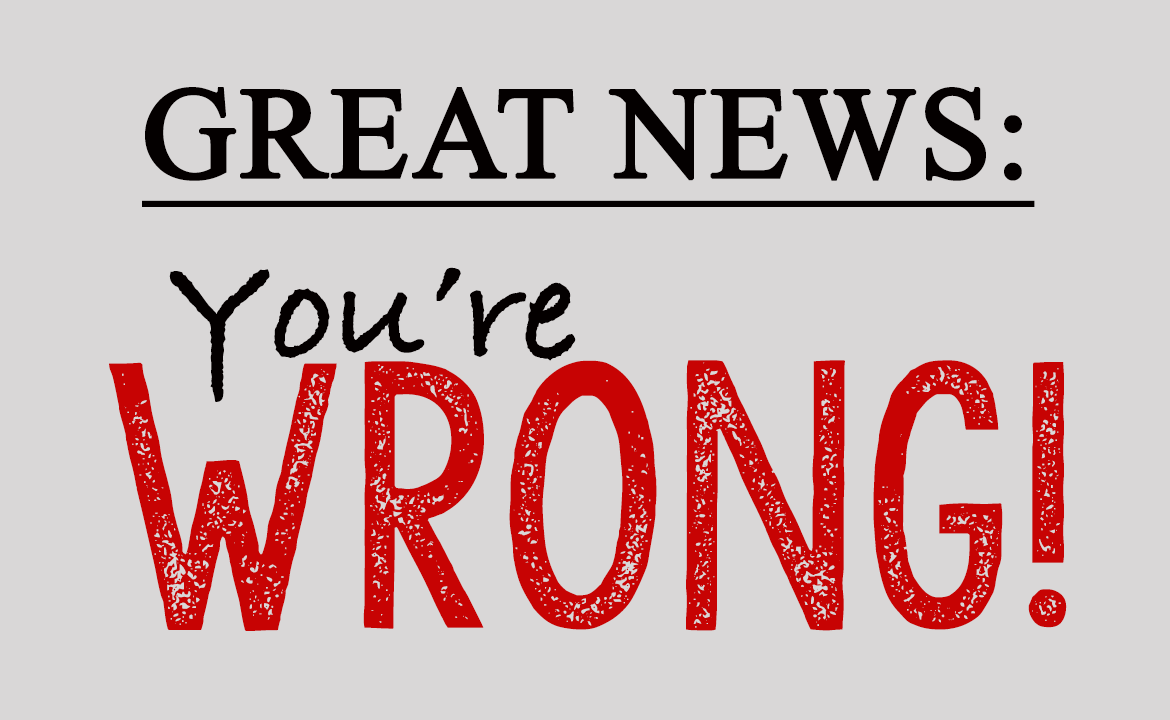“I’m wrong about almost everything, almost all the time.”
Tom Meloche said that to me several years ago, and it remains one of the most helpful, provocative things I’ve ever heard.
Tom wasn’t saying that he was a poor planner or a careless person, he was simply admitting a fact—a fact that applies to all of us. When we are seeking an answer or solution, there are infinite possibilities in front of us. The odds that we will find the best possible answer are remote, especially when you consider the fact that our brains are wired for simplicity.
As a child, when adults asked what I wanted to be when I grew up, I didn’t rattle off seven possibilities. I gave one answer: a fashion designer. And I was wrong! Then in college I gave a different answer: a therapist. Throughout my four years of undergrad and two years of grad school, I gave the same answer. Guess what! I was wrong.
Consider your last project: how long did you spend thinking of that improvement or product or service? How many alternatives did you consider? If you’re like most of us, you stopped brainstorming as soon as you came to a plausible solution.
This preference for our first idea is not only natural, it’s actually helpful in most scenarios. Spending time and energy considering alternate paths to preparing spaghetti or mailing a letter or dialing 911 will just waste that time and energy. Our brains are great at simplifying and generalizing in order to help us move forward efficiently. But this does not aid us in creating new, innovative solutions.
The bad news is that considering alternatives requires discipline and practice. We are working against our hardwiring, and that takes effort! Purposefully rethinking our assumptions and first drafts is hard work, but it can be done.
1) Prioritize
As you build this discipline, focus on the ideas for which innovation is most important. Where do you need an especially fresh, interesting perspective? Which products or solutions need to stand out most in the marketplace?
2) Create alternatives
Set a goal for how many alternative ideas you want to generate. Then, sit down and brainstorm! What if we had fewer limitations? What would you make then? What if we had MORE limitations? How would you work around those? Consider the value you’re trying to deliver to your customer and challenge the different ways you might deliver it.
3) Communicate your goals
Let your employees, peers, and superiors know what you’re doing. Make sure they feel empowered to ask questions and challenge you on the projects you’ve prioritized. Build accountability into your practice.
4) Get feedback
Once you have a set of alternatives, continuously get feedback on your decision. This feedback will let you know if you are moving in the right direction and will let you know when you’re wrong and need to make an adjustment to your approach.
Take-Aways: Your first idea is probably not your best idea, practice creating alternative solutions, and ask for support and feedback as you build this new skill.
Questions: Do you agree? Disagree? What are some times in your life when you’ve followed your first instinct– and it was wrong? What are some examples of times when you should go with your first idea? When should you make time to challenge that first idea?

